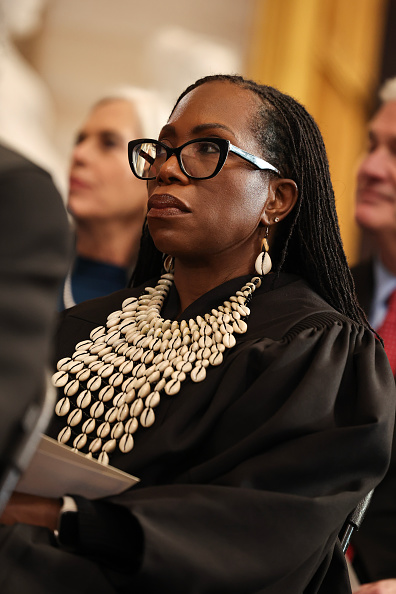Lawsuits Travel Up North

Scott Smith. Photo by Tim Pearson
Beverly Marino is one of thousands of women who have sued a handful of pharmaceutical companies that made, marketed or sold the hormone replacement therapy drugs they allege gave them breast cancer and other diseases.
Unlike many of the other women, however, Marino didn’t file in her home state of California, both where the drugs were presumably prescribed and ingested, and where her breast cancer was diagnosed and treated in the early 1990s.
Nor did she sue the five named defendants in the states where they incorporated, manufactured their products or established their principal places of business: Delaware, Michigan, New Jersey, New York and Pennsylvania. Many other women who claim to have been injured from taking the drugs have done that.
Instead, Marino filed suit in federal court in Minnesota, where the only apparent connection to her claim is that all five companies were qualified to conduct business there in the 1980s—as they did in all 50 states—when she was taking the drugs in California.
The reason: Minnesota has one of the nation’s longest statutes of limitations on personal injury actions—six years for negligence and four years for strict product liability claims. Most states have two- or three-year statutes. At least two other states, Maine and North Dakota, have six-year statutes.
CHOICE OF LAW SETS STATE APART
But no other state has Minnesota’s choice-of-law jurisprudence, which basically allows an out-of-state resident to pursue a lawsuit against an out-of-state company in what would be a time-barred claim in the plaintiff’s home state. The defendant need only be authorized to do business in Minnesota and have a registered agent there to accept service of process.
Marino freely admits as much in her complaint, filed in June 2006 in U.S. District Court in Minneapolis. “Plaintiff’s ability to file in California is prevented by the expiration of California’s one-year statute of limitations,” reads her petition. It goes on to say that because the pharmaceutical companies had sales reps in the state of Minnesota, “there exists a sufficient nexus between the defendants’ forum contacts and the plaintiff’s cause of action to justify assertion of jurisdiction in Minnesota.”
Although the state legislature attempted to deal with the problem in 2004, the effort has been less than successful. More than 9,000 out-of-state plaintiffs like Marino have since filed personal injury or product liability suits against out-of-state pharmaceutical companies and medical device makers in Minnesota’s state and federal courts. And, like Marino’s, the vast majority of those suits would be time-barred virtually anywhere else, says Minneapolis defense lawyer Scott A. Smith.
In fact, says Smith, who has been closely monitoring the trend, out-of-state plaintiffs make up about 93 percent of drug and medical device cases filed in Minnesota’s state and federal courts since federal court filings went online there in May 2004. The pace of such filings has also skyrocketed, he says, from more than 500 in 2004 to 951 in 2005 to 6,891 in 2006, the last full year for which figures are available.
How did Minnesota’s courts become a hotbed for out-of-state plaintiffs? Like many other states, Minnesota long had guidelines for deciding venue conflicts for multistate cases, applying separate rules to substantive and procedural issues, defense lawyers say.
Moreover, Minnesota also had a “borrowing” statute, designed to prevent forum shopping. Most states have such a statute, which prevents nonresidents from taking advantage of a state’s longer statute of limitations to preserve a cause of action time-barred in their own.
That all changed beginning in 1973, according to the defense bar, when the Minnesota Supreme Court held that conflicts in substantive laws in multistate cases should be resolved by weighing factors such as the predictability of the result, the maintenance of interstate order and the better rule of law. Milkovich v. Saari, 203 N.W.2d 408. Most other states have done the same.
Then in 1978, the Minnesota legislature repealed the state’s borrowing statute, apparently in the mistaken belief that doing so would free the courts to apply the Milkovich weighing factors to conflicts with the statute of limitations, according to the defense bar.
But five years later, Minnesota’s high court, unlike those in some other states, held that Milkovich didn’t apply to conflicts involving the statute of limitations. Davis v. Furlong, 328 N.W.2d 150 (1983). The court has left unanswered the question of whether a time-barred claim elsewhere should be given new life in Minnesota.
In 2004, in a belated effort to correct their course, the legislature tried to rectify the situation by reinstating the state’s borrowing statute. But it applies only to any potential claimants whose alleged injury occurred after Aug. 1, 2004.
The clock on the state’s six-year statute of limitations doesn’t begin to run until the date that a potential claimant discovers the proximate cause of his or her alleged injury. And as a result, Smith says, the floodgates are open to a potential sea of new lawsuits by out-of-state residents seizing the opportunity to file before time runs out.
Smith is not personally involved in the Marino case, although his firm represents one of the defendants. And he doesn’t want to minimize the seriousness of her disease. But he and other defense lawyers say they want to know why the Minnesota courts should provide her—and thousands of other claimants with little or no connection to the state—with a potential remedy that their own state courts won’t provide.
It’s bad enough, he says, that many of those cases have nothing to do with Minnesota, except that the defendants do business there. That most of those claims would be time-barred in the plaintiff’s home state makes it even worse. And the fact that more and more out-of-state plaintiffs are saying as much in their complaints adds insult to injury.
“I think there’s something wrong with a system that not only allows plaintiffs to forum shop but to boast about it in their complaint,” Smith says.
Marino’s lawyer, Ted Meadows, who is based in Montgomery, Ala., but admitted to practice in Minnesota, didn’t return calls for comment. But Minnesota-based plaintiffs lawyers who represent out-of-state clients don’t deny that many of those claims would be time-barred in the plaintiffs’ home states, although they don’t call what the plaintiffs are doing forum shopping.
RIGHTFUL RECOVERY
The plaintiffs lawyers say that people who have been harmed by a dangerous or defective product have a right to recover from a company whose unsafe product caused their injuries, irrespective of where they live, if the company is selling the same unsafe product to consumers in multiple states.
“This is not a bad thing for society at large,” says Minneapolis plaintiffs lawyer Gale Pearson. “It’s only a bad thing for a company that’s doing something wrong and not telling anybody about it.”
Ronald Goldser, another Minneapolis plaintiffs lawyer, acknowledges that Minnesota is getting more than its share of out-of-state litigants. But he refuses to say whether he thinks a nonresident should be able to pursue a lawsuit in Minnesota that would be time-barred in his or her home state.
“Whether I think it’s right or wrong doesn’t matter,” he says. “It’s the law.”
He and other plaintiffs lawyers also insist that the surge in new filings will be short-lived and impose no long-term burden on the Minnesota courts. That’s because the bulk of those new cases have been or will become part of a multidistrict litigation proceeding, a process whereby large numbers of similar cases filed nationwide are consolidated before one judge for pretrial purposes.
But Smith points out that few if any of those MDL cases would even exist were it not for Minnesota’s lengthy statute of limitations and the courts’ willingness to extend that protection to out-of-state residents. And unless those claims become part of some global settlement, each of those individual cases that were filed in Minnesota will have to be returned to Minnesota for trial.
“This conceivably could go on for a very long time,” he says.
Write a letter to the editor, share a story tip or update, or report an error.


